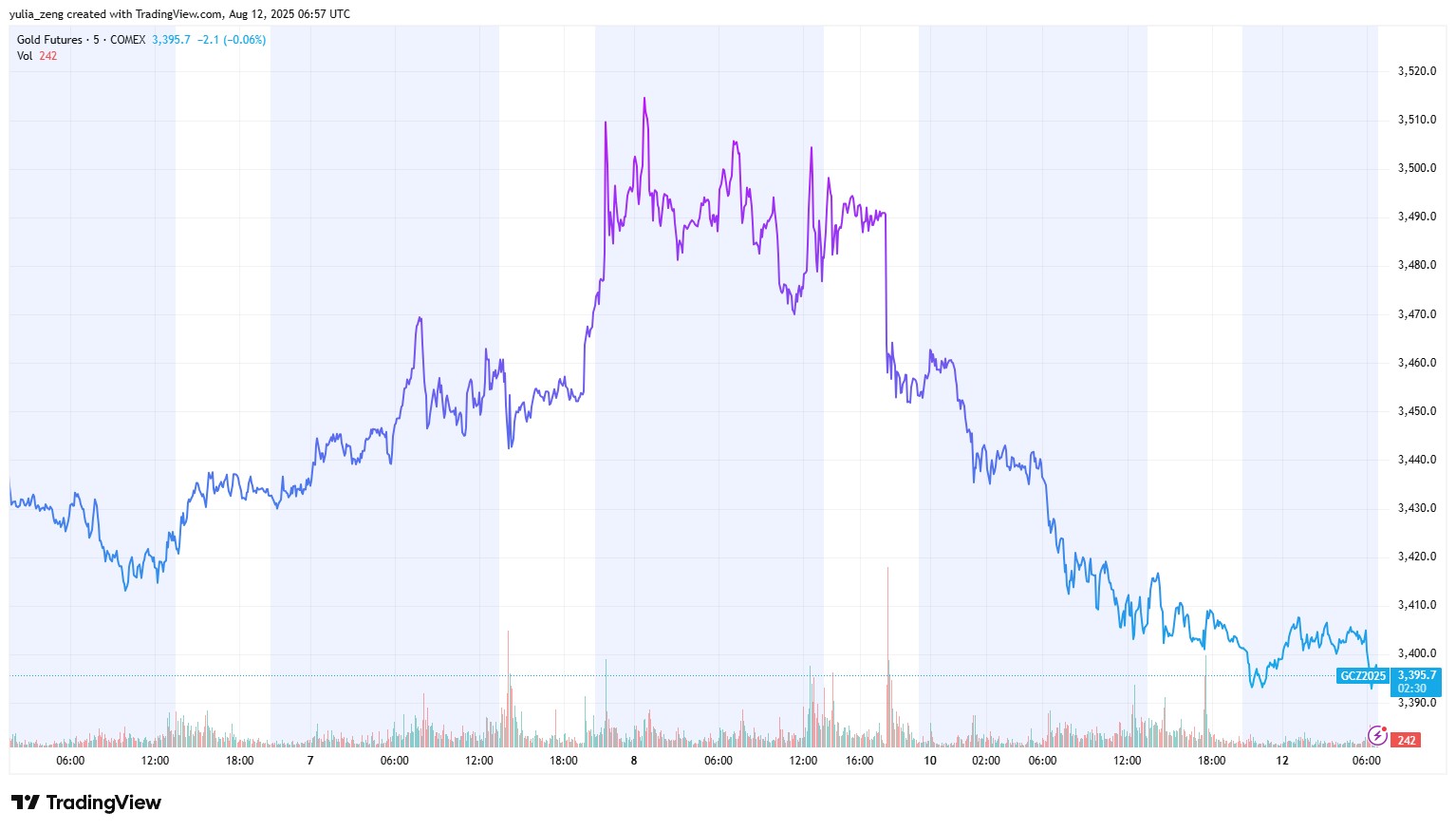Trump "Clarifies" Zero Gold Tariff Stance; Prices Suffer Biggest 3-Month Drop

TradingKey - On August 11, Trump posted a clear statement on his social media platform declaring "Gold will not be tariffed," ending market concerns over potential gold tariffs and triggering a sharp price decline—the largest single-day drop in nearly three months.

Source: Truth Social
The announcement sent COMEX near-month gold futures tumbling nearly 2.5% on Monday, breaking below the $3,400 per ounce mark in after-hours trading and marking the biggest decline since May. Spot gold closed 1.61% lower at $3,342.88/ounce, briefly touching a session low of $3,341.36—sharply contrasting with last week’s record highs.
Gold futures extended losses on Tuesday, with COMEX gold futures trading at $3,395.80/ounce at press time, down 0.26%.

Source: TradingView
The volatility was triggered by a U.S. Customs and Border Protection (CBP) document released last week, which mentioned potential tariffs on imported 1-kilogram and 100-ounce gold bars. The news immediately spurred gold’s rally, sending COMEX December gold futures to a record high of $3,534.10/ounce.
Industry experts had warned that such a tariff policy, if implemented, would severely disrupt international physical gold flows—particularly exports from refining hubs like Switzerland to the U.S., potentially facing up to 39% additional costs and destabilizing the entire gold pricing system.
Trump’s latest statement reversed market expectations.
A White House official disclosed that the administration is preparing an executive order to "clarify misinformation regarding tariffs on gold bars and other specialty products," further eliminating policy uncertainty.
"Delighted to hear the crisis has been averted," said Ross Norman, an independent gold market analyst. "It will come as an enormous relief to the bullion markets, as the potential for disruption was incalculable."
Analysts also noted that fading tariff concerns, coupled with market expectations of a Russia-Ukraine ceasefire agreement by Friday, further eroded gold’s safe-haven appeal and contributed to the sustained price decline.







